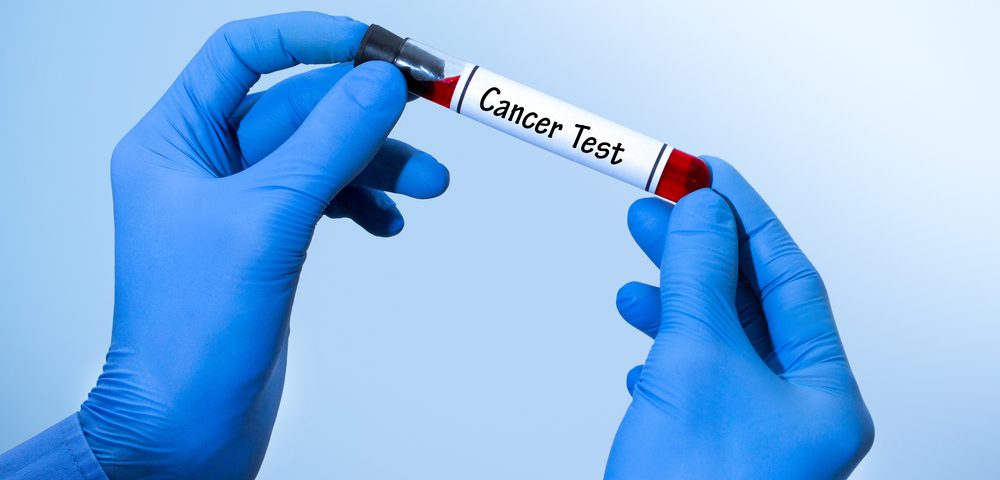Ovarian cancer detection may become easier and without an expensive bill attached as researchers developed the first test that screens for this and seven other common cancer types using a simple blood sample.
The test, called CancerSEEK, measures the levels of proteins specific for eight common cancers in the U.S., five of which have no current standard screening test, and detects mutations in cancer genes from DNA circulating in the blood.
“The use of a combination of selected biomarkers for early detection has the potential to change the way we screen for cancer, and it is based on the same rationale for using combinations of drugs to treat cancers,” study lead author Nickolas Papadopoulos, PhD, professor of oncology and pathology at Johns Hopkins University School of Medicine, said in a press release.
The study, “Detection and localization of surgically resectable cancers with a multi-analyte blood test,” was published in the journal Science.
The researchers at Johns Hopkins Kimmel Cancer Center began testing several genes and proteins and came down to segments of 16 genes and eight proteins to test further.
They tested it in 812 healthy controls and found only seven false positives – when a condition is detected as present when in fact it is not – rendering a 99 percent specificity for cancer.
“Very high specificity was essential because false-positive results can subject patients to unnecessary invasive follow-up tests and procedures to confirm the presence of cancer,” said Kenneth Kinzler, PhD, a professor of oncology and the co-director of the Ludwig Center for Cancer Genetics at Johns Hopkins.
They then evaluated the test’s performance in 1,005 patients with non-metastatic ovarian cancer, ranging from early to advanced stages (I to III), and seven additional cancers – liver, stomach, pancreas, esophagus, colorectum, lung, and breast.
The test’s sensitivity (its ability to detect cancer) was the highest for ovarian cancer – 98 percent – and the lowest for breast cancer – 33 percent. The median overall sensitivity was 70 percent.
“A novelty of our classification method is that it combines the probability of observing various DNA mutations together with the levels of several proteins in order to make the final call,” said Cristian Tomasetti, PhD, associate professor of oncology and biostatistics, who developed the algorithm.
“Another new aspect of our approach is that it uses machine learning to enable the test to accurately determine the location of a tumor down to a small number of anatomic sites in 83 percent of patients,” he said.
While the test only detects a small subset of cancer types, many of them would likely go undetected because no current screening tests exist for them.
“Many of the most promising cancer treatments we have today only benefit a small minority of cancer patients, and we consider them major breakthroughs. If we are going to make progress in early cancer detection, we have to begin looking at it in a more realistic way, recognizing that no test will detect all cancers,” said Bert Vogelstein, MD, co-director of the Ludwig Center, Clayton Professor of Oncology, and investigator at the Howard Hughes Medical Institute at Johns Hopkins.
The CancerSEEK test is the outcome of decades of international research into the genetic basis of cancer, and based at the Ludwig Center at Johns Hopkins,
The number of DNA bases analyzed in the CancerSEEK test was carefully determined according to the principle of diminishing returns.
“The more DNA bases you assay, the more mutations you are capable of finding, but eventually you reach a point of diminishing returns,” Cohen said. “We designed our test to reflect this point of diminishing returns, including the DNA markers that were useful to detecting the cancers and eliminating those that did not add benefit.”
As a result, they included a low but highly representative number of markers of cancerous DNA.
“Circulating tumor DNA mutations can be highly specific markers for cancer. To capitalize on this inherent specificity, we sought to develop a small yet robust panel that could detect at least one mutation in the vast majority of cancers,” said Joshua Cohen, an MD-PhD student at the Johns Hopkins School of Medicine and the study’s first author. “In fact, keeping the mutation panel small is essential to minimize false-positive results and keep such screening tests affordable.”
“This test represents the next step in changing the focus of cancer research from late-stage disease to early disease, which I believe will be critical to reducing cancer deaths in the long term,” Vogelstein added.
The CancerSEEK test is performed as a routine blood test, with the potential to be included in routine clinical practice and substantially impact patients’ lives.
“Earlier detection provides many ways to improve outcomes for patients. Optimally, cancers would be detected early enough that they could be cured by surgery alone, but even cancers that are not curable by surgery alone will respond better to systemic therapies when there is less advanced disease,” said Anne Marie Lennon, MD, PhD, associate professor of medicine, surgery, and radiology, clinical director of gastroenterology, and director of the Multidisciplinary Pancreatic Cyst Program.
Also, the price of the test is in line with currently available screening tests for single cancers, such as a colonoscopy for colorectal cancer. Researchers estimate that the CancerSEEK test will eventually cost less than $500.
“To actually establish the clinical utility of CancerSEEK and to demonstrate that it can save lives, prospective studies of all incident cancer types in a large population will be required,” the study concluded.

